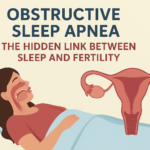Written by Aisha and Reviewed by Dr. Manvir Bhatia-20/06/2025
What Are Neurological Disorders?
Neurological disorders are medical conditions that affect the brain, spinal cord, nerves, or muscles throughout the body.
It could be brain-related, nerve-related, or muscle-related.
Central Nervous System (Brain & Spinal Cord) Related Neurological disorders: Stroke, Epilepsy, Alzheimer’s disease, Parkinson’s disease, Brain tumors, Stroke, Migraine, multiple sclerosis, Encephalitis (brain inflammation).
Peripheral Nerve-Related Neurological Disorder: Peripheral neuropathy, which can be genetic or acquired
Muscles Related Neurological disorder: Myopathy, Myasthenia gravis, and Muscular dystrophy
Cause of Neurological Disorders:
Neurological disorders can arise from a range of causes:
- Genetic: Inherited or spontaneous gene mutations can lead to conditions like Huntington’s disease or muscular dystrophy.
- Infectious: Viruses (e.g., Herpes, HIV), bacteria (e.g., meningitis, tuberculosis), fungi, or parasites can invade the nervous system.
- Vascular: Disruption in blood flow, such as stroke or aneurysm, can damage brain or spinal cord tissue.
- Trauma: Head injuries, spinal cord injuries, or nerve compression can cause temporary or permanent neurological deficits.
- Degenerative: Progressive loss of neurons, as seen in Alzheimer’s, Parkinson’s, or ALS, leads to worsening function over time.
- Autoimmune: The body’s immune system mistakenly attacks nervous tissue, as in multiple sclerosis or myasthenia gravis.
- Environmental/Toxic: Exposure to heavy metals, pesticides, alcohol, or drug abuse can damage the nervous system.
- Metabolic/Nutritional: Deficiencies in vitamins (like B12), thyroid dysfunction, or liver/kidney failure can impair nerve function.
Symptoms of Neurological Disorders
1. Central Nervous System (Brain & Spinal Cord) Related Symptoms
- Headache (persistent, severe, or sudden onset)
- Memory loss or confusion
- Seizures or convulsions
- Loss of consciousness or fainting
- Difficulty speaking or understanding speech (aphasia)
- Trouble with coordination or balance (ataxia)
- Vision changes (blurred, double vision, or loss of vision)
- Behavioral or personality changes
- Paralysis or weakness on one side of the body
2. Peripheral Nerve-Related Symptoms
- Numbness or tingling (especially in hands or feet)
- Burning or shooting pain along a nerve path
- Muscle weakness or twitching
- Loss of reflexes or coordination in limbs
- Sensitivity to touch or temperature changes
3. Muscle-Related Symptoms (Neuromuscular Disorders)
- Muscle cramps or spasms
- Progressive muscle weakness (often starting in the limbs)
- Difficulty swallowing or breathing
- Drooping eyelids or facial muscles
- Fatigue after minimal activity
Types of Neurological Disorders
1. Central Nervous System (Brain & Spinal Cord) Disorders
- Stroke – A condition where blood flow to a part of the brain is interrupted, causing brain cell damage.
- Epilepsy – Repeated seizures due to abnormal electrical activity in the brain.
- Multiple Sclerosis (MS) – An autoimmune disease where the immune system attacks the protective covering of nerves.
- Parkinson’s disease – A neurodegenerative disorder affecting movement and coordination.
- Alzheimer’s disease: A progressive brain disorder that causes memory loss and cognitive decline.
- Migraine: A neurological condition characterized by intense, throbbing headaches often with nausea and sensitivity to light or sound
2. Peripheral Nervous System (Nerve-related) Disorders
- Peripheral Neuropathy – Damage to peripheral nerves causes tingling, pain, or weakness.
- Guillain-Barré Syndrome (GBS) – Autoimmune nerve damage leading to rapid weakness.
- Trigeminal Neuralgia – Severe facial nerve pain.
- Carpal Tunnel Syndrome – Compression of the median nerve in the wrist.
- Huntington’s disease: A genetic disorder that causes the progressive breakdown of nerve cells in the brain.
- Essential Tremor – shaking of hands or head.
3. Neuromuscular Junction and Muscle Disorders
- Myasthenia Gravis – An Autoimmune disorder causing muscle weakness, especially after activity.
- Muscular Dystrophy – A Genetic disorder leading to progressive muscle wasting.
- Polymyositis / Dermatomyositis – Inflammatory muscle diseases causing weakness.
- Amyotrophic Lateral Sclerosis (ALS): A progressive disease that affects nerve cells controlling voluntary muscle movement.
Diagnosis
Diagnosing a neurological disorder involves a systematic approach starting with a detailed clinical evaluation, neurological examination, including medical history, symptom analysis, and family background. A thorough neurological examination assesses motor skills, reflexes, coordination, sensation, and cognitive function. Based on these findings, tests like EEG (to assess brain activity), NCS and EMG (to evaluate nerve and muscle function), MRI or CT scans (to detect structural brain and spinal issues), and genetic testing (for hereditary disorders) may be used. In some cases, a lumbar puncture is done to analyze cerebrospinal fluid. These tools collectively guide accurate diagnosis and treatment planning.
Treatment
Treatment depends on the specific disorder but may include medications, physical therapy, surgery, or lifestyle changes. Early diagnosis is crucial for managing symptoms and slowing progression. In some cases, supportive therapies such as occupational and speech therapy are also beneficial.
Prevalence
According to the Lancet Neurology, a diverse group of conditions affecting 43% of the world’s population (3.4 billion individuals) in 2021. Neurological conditions were responsible for 443 million years of healthy life lost due to illness, disability, and premature death (disability-adjusted life years) in 2021.
Over 80% of neurological deaths and health loss occur in low- and middle-income countries (LMICs)

Prevention Tip:
- Prevention is crucial due to limited cures and access to care for many neurological conditions.
- 18 modifiable risk factors were identified; controlling high systolic blood pressure alone could prevent 57% of stroke-related DALYs.
- Lead exposure control could reduce intellectual disability burden by 63%; normalizing blood sugar could reduce the dementia burden by 15%.
- Neurological conditions are rising rapidly, straining health systems; many are preventable or have no cures.
- A lifetime approach is needed, targeting both infectious and non-communicable neurological diseases.
- The study highlights data gaps, especially in low- and middle-income countries.
- Experts urge more focus on neuromuscular diseases, nervous system cancers, and neuropathic pain in future research.
(Institute for Health Metrics and Evaluation)
Raising Awareness
Public awareness can lead to early diagnosis, better management, and reduced stigma. Community education, support groups, and funding for research are essential components.
Conclusion
Understanding neurological disorders is crucial for promoting brain health and supporting individuals affected by these conditions, as well as their families. Together, we can advocate for better care and a brighter future.











